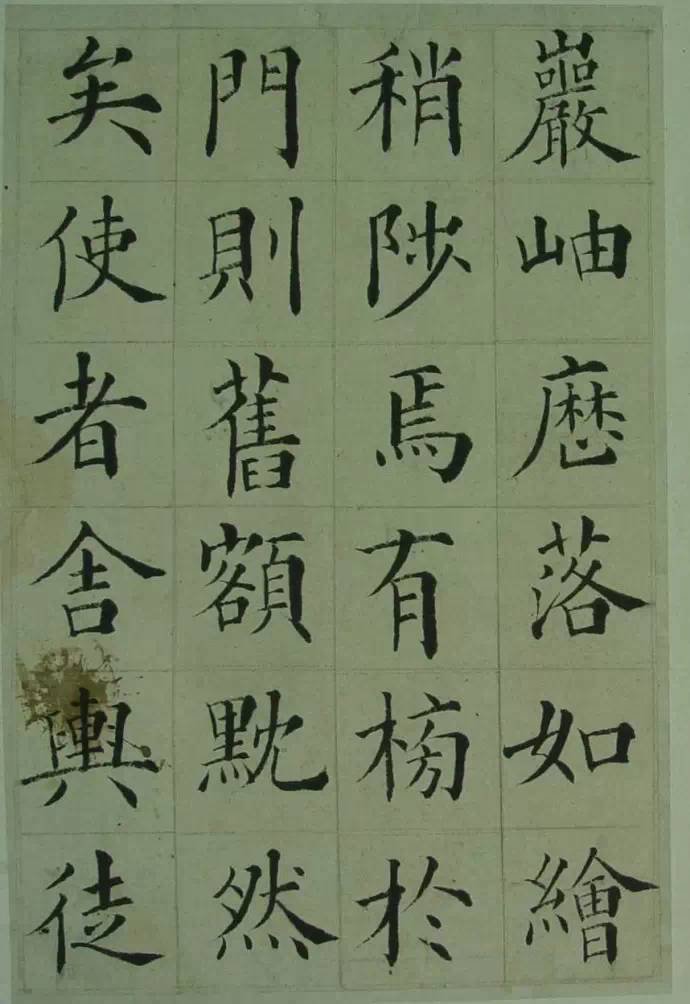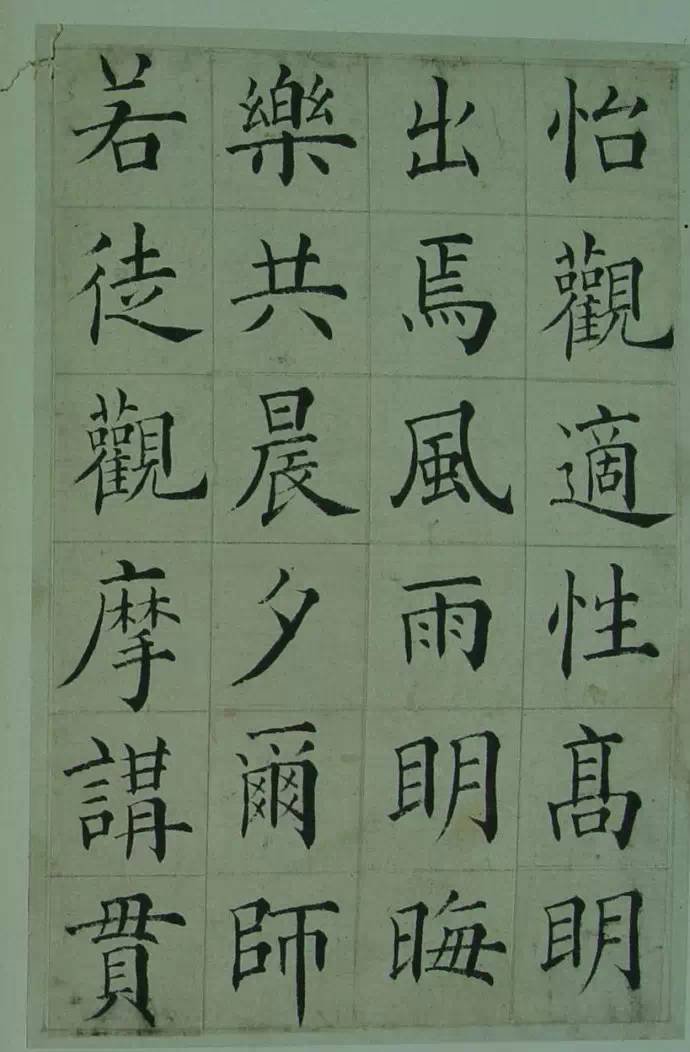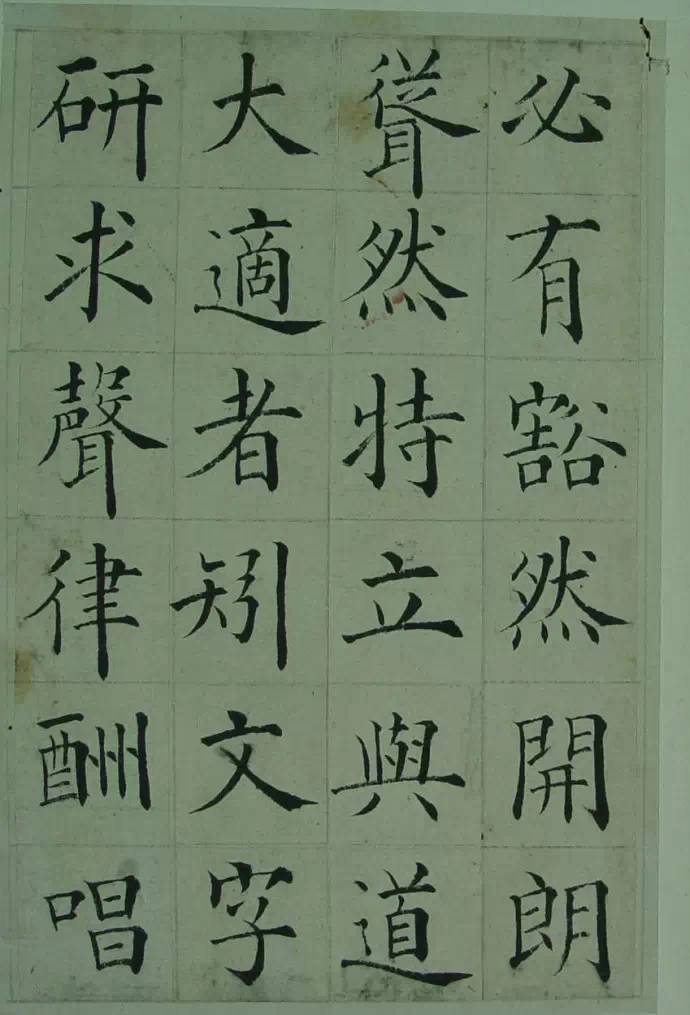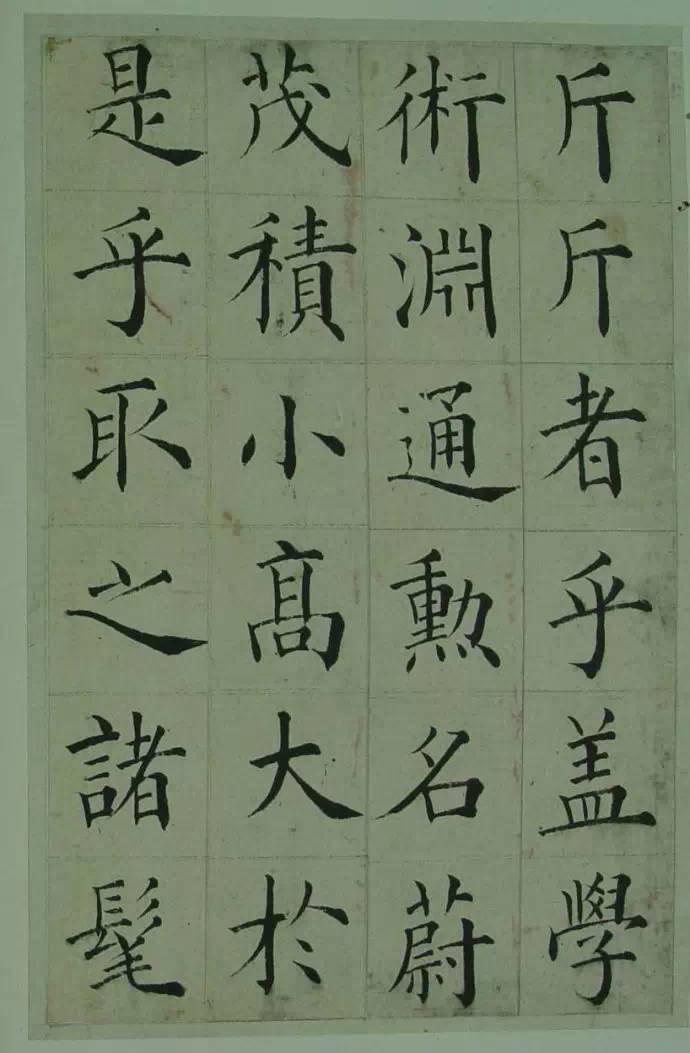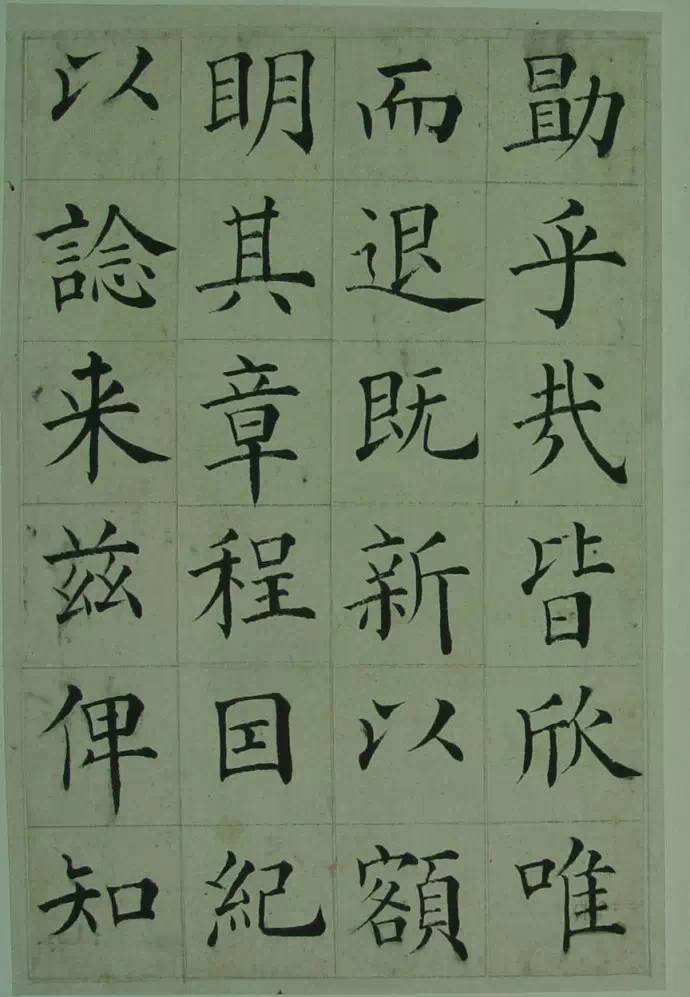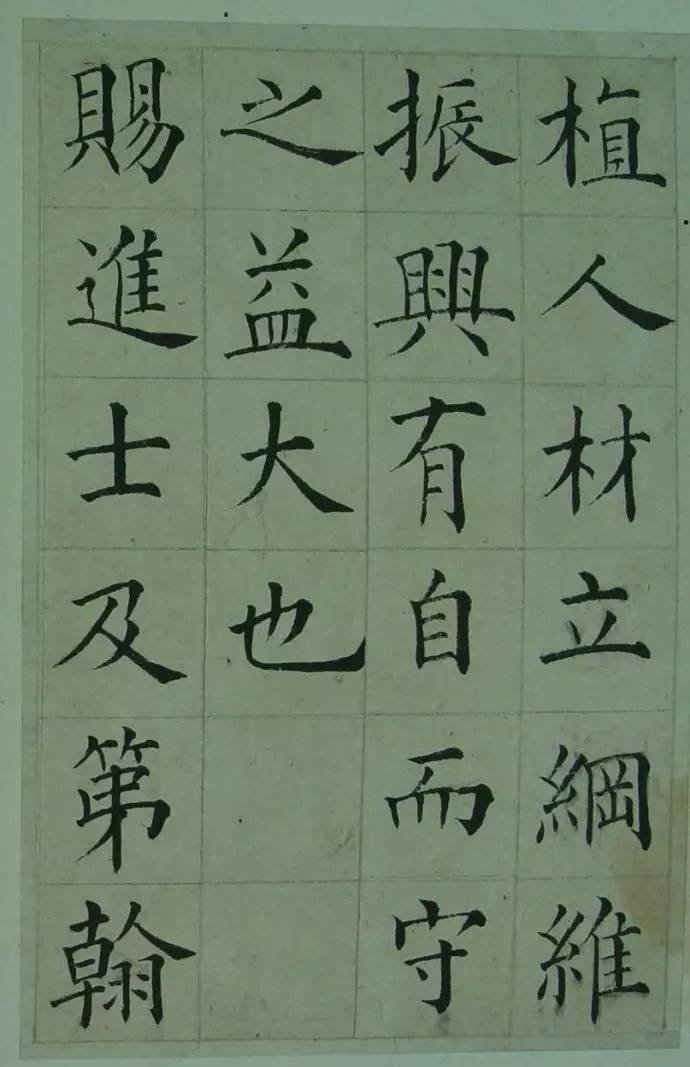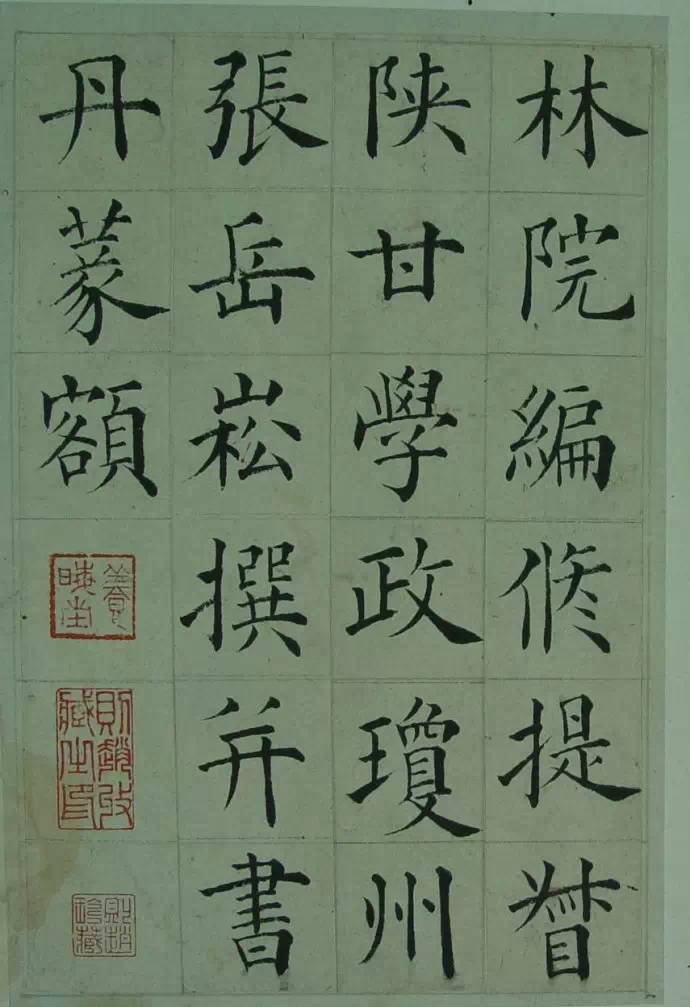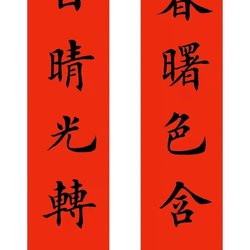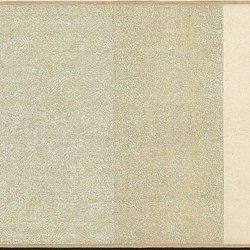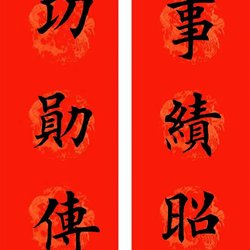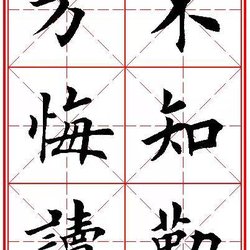"Nan'an Academy Stele" in regular script by Zhang Yuesong
Zhang Yuesong (1773-1842), also known as Zijun, also known as Hanshan (first as Lushan), and named Jue'an, was a native of Gaolin Village, Yongfeng Township, Ding'an County, Hainan Province (formerly Guangdong Province). A famous official, writer, calligrapher and painter in the Qing Dynasty. He was the only Tanhualang in Hainan during the Ming and Qing dynasties. He has successively served as co-editor of the National History Museum, co-examiner of the National Examination, editor of Wenying Hall, editor of Wuying Palace, tutoring Shujishi, chief examiner of Sichuan Rural Examination, Shaanxi-Gansu Academic Affairs, Wenyuan School Administrator, Imperial Academy Lecturer, Jiangsu Changzhen Tonghai Bingdao, Hubei Chief Envoy, Salt Transport Envoy to Zhejiang and Zhejiang, Zhejiang Inspector, Dali Temple Shaoqing, Zhanshifu Zhanshi, Nursing Governor and other positions.
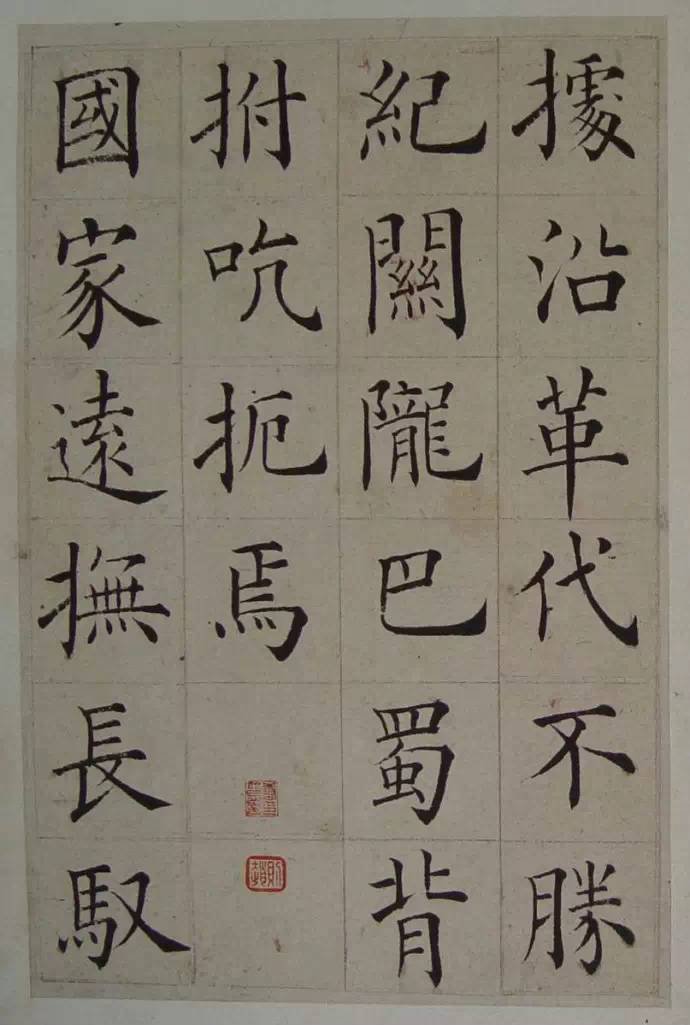
Zhang Yuesong is erudite and has a wide range of interests. He is praised for his articles, calligraphy and painting. He is also a well-known calligrapher and painter in the Qing Dynasty, especially famous for his calligraphy. The modern published "Dictionary of Chinese Calligraphers and Painters", "Chronology of Calligraphers and Painters of the Song, Yuan, Ming and Qing Dynasties", " Books such as "Lingnan Painting Survey" have articles specifically introducing Zhang Yuesong, saying that his "calligraphy is as famous as Guo Lanshi (Shang Xian). He was a painter of the Yuan Dynasty. He did not make many paintings. He has only a few pieces of ink left, and he has many treasures." " "Guochao Painting Survey" listed Zhang Yuesong as one of the four major calligraphers in Guangdong, and "Hanshan Gong's Record of Worshiping the Rural Sages" said that "calligraphy has the secrets of various schools in the Jin and Tang Dynasties, and each imitation is exquisite, with only one word in a piece, and a person's calligraphy Fight for the treasure." The "Dictionary of Chinese Calligraphers and Painters" said that he was "the calligrapher Ou (Yang Xun) Liu (Gong Quan), especially good at breaking large characters. At that time, many tablets were produced by his hand." There are many handwriting relics of Zhang Yuesong. To be passed down to future generations, the Ding'an County Museum still preserves Zhang Yuesong's handwritten banners, couplets, manuscripts, plaques and various seals. There are also many people in Hainan who have collected his calligraphy works, but only the manuscripts of the inscriptions have been seen.
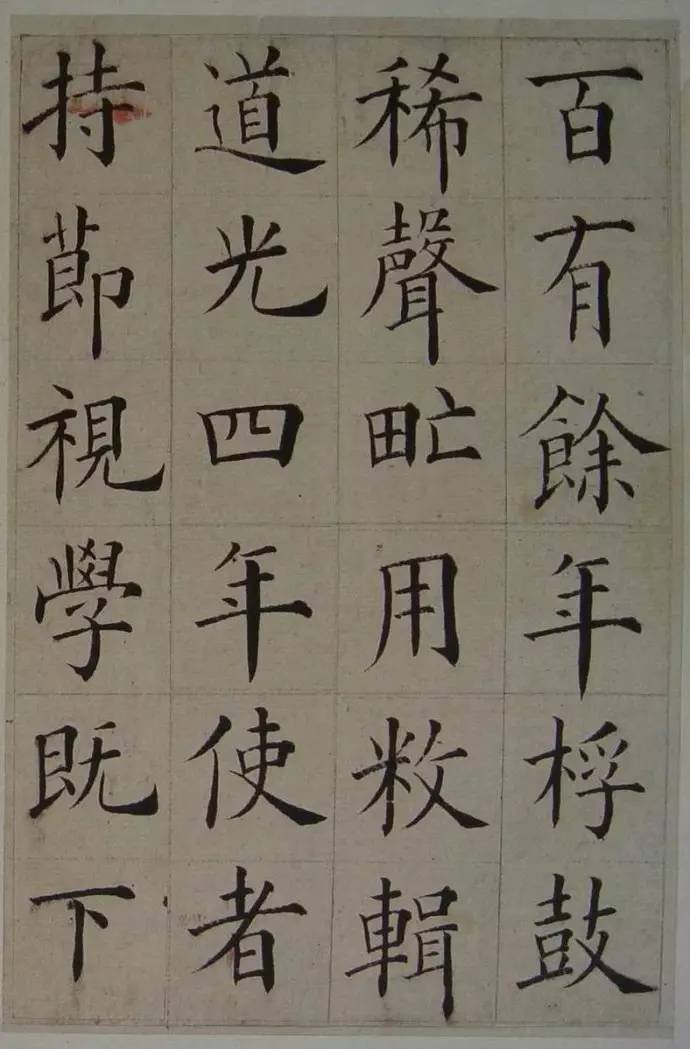
Zhang Yuesong is a rare talent in the history of Hainan. In addition to being proficient in articles, calligraphy and painting, he is also proficient in law, economics, water conservancy, military, and medicine. He is truly an all-rounder. During his lifetime, he wrote "Collected Works of Jun Xintang", "Collected Poems of Jun Xintang", "Journey to the North of the Canal", "Records of Disciples", "Occasionally Existed Official Documents", etc., which are still preserved in the Guangdong Sun Yat-sen Library. Daoguang's "Qiongzhou Prefecture Chronicles" that we are most familiar with was compiled by him. Zhang Yuesong also lectured at Qiongzhou Qiongtai Academy, Yanfeng Academy, Yangcheng Yuexiu Academy, and Zhaoqing Duanxi Academy. He made great contributions to Hainan's cultural and educational undertakings throughout his life. He was hailed as one of the four great talents in Hainan (Qiu Jun, Hai Rui, Wang Zuo, Zhang Yuesong) by the people of Hainan in the past dynasties. He was one of the "Four Talents" in Hainan who was famous for his tireless study and proficiency in calligraphy and painting.
Nan'an Academy and "Nan'an Academy Stele"
"Shu Shan Gong Xing Shu" mentions: In the fourth year of Daoguang reign of the Qing Dynasty (1824), Admiral Zhang Yuesong was in charge of the academic affairs of Shaanxi and Gansu. He donated his salary to repair Nizhong Academy in Hanzhong, Nan'an Academy in Gongchang, Diaoshan Academy in Suide, etc. According to the "Information on Ancient Chinese Academy" edited by Deng Hongbo and others: Gongchang Nan'an Academy was built in the fifth year of Daoguang (1825). Gongchang, now Longxi City, Gansu Province, was the largest political, economic, cultural and educational center in western Gansu. Nan'an Academy, now Longxi Normal University
predecessor. Zhang Yuesong's "Nan'an Academy Stele" records the construction of the academy.
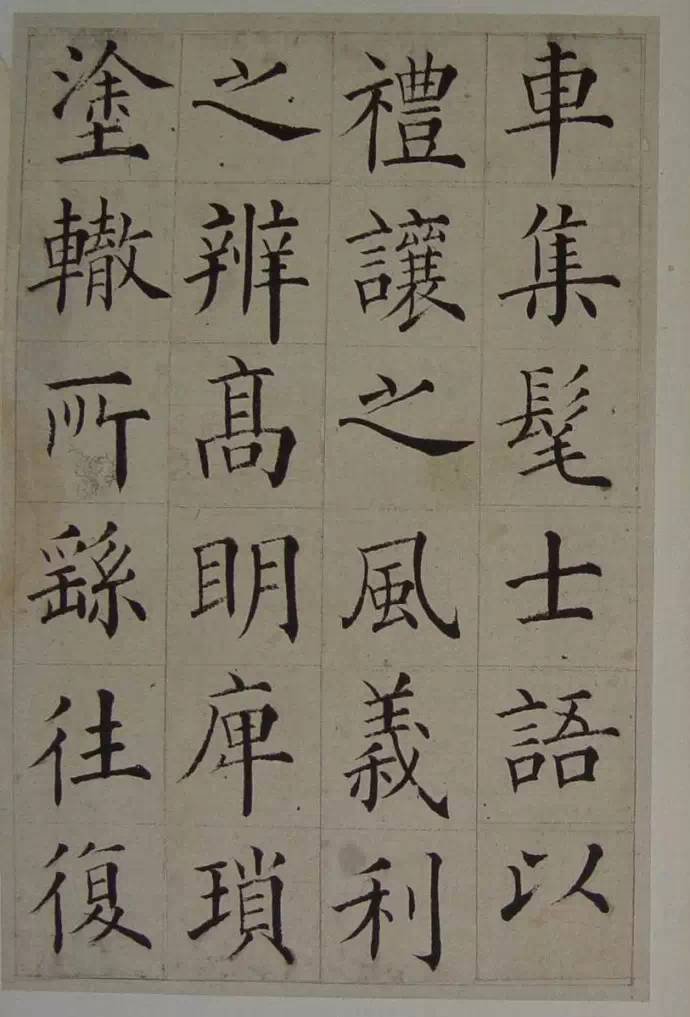
The opening chapter of the album states: "Gong was the homeland of the Qin Dynasty. The ancestors of the dragon established the county of Longyou. During the Han Dynasty, Nan'an was moved to Nan'an. The history of the separatist regimes is endless. The mountains and rivers of Bashu and Sichuan are separated from each other." It is stated that Gongchang is where Nan'an Academy is located. Location and history. Among them, "ancestral dragon" refers to Qin Shihuang. Zhang Yuesong used the word "ancestral dragon" many times in six ancient five-character historical poems, such as "The ancestral dragon travels eastward, it is better to know that the real person is hiding"; "The ancestral dragon controls ten thousand directions, and the Zoroastrian Comet II" etc. , it can be seen that this is consistent with Zhang Yuesong's wording habits.
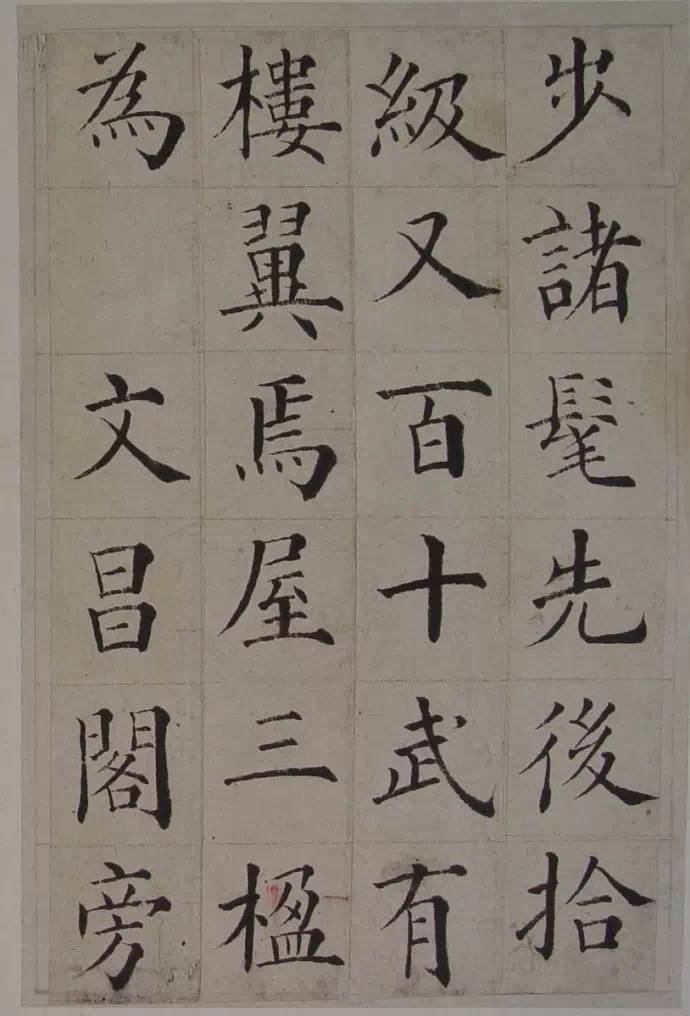
"...the country has been governed from far away and controlled by long-term governors for more than a hundred years. The sound of drums and drums is rare, and the gangsters use the law. In the fourth year of Daoguang Dynasty, the envoys adhered to the principles of discipline and inspection. After getting off the car, they collected the words of the fashionable people and the style of courtesy, and the distinction between justice and benefit was brilliant. Suo, Tu Zhe's steps back and forth...". In the fourth year of Daoguang reign of the Qing Dynasty, Zhang Yuesong took up the post of academic administrator of Shaanxi and Gansu, assisting students and promoting teaching. The establishment of academies was his responsibility, which is also the significance of textual research to determine the time when the "Nan'an Academy Stele" was written.
"...Zhu Mao has successively climbed up the stairs and built hundreds of martial arts. There are towers and wings. The three couplets of the house are: Wenchang Pavilion, with more than ten areas of fighting room next to it. Looking north to the battlements, there are rows of cities, the Wei River is clear, and there are birds and mice in Shouyang. Surrounded by far and near,...this place is secluded and steep, far better than the shopping malls. It is managed with vines, the plants are beautiful, the monks live in the Buddhist rooms, and the salty materials live there. , the habit of quick profit has been lost..." It can be seen that the internal layout of "Nan'an Academy" and the external environment are row upon row, quiet and quiet, as well as the expectations for the ideal of the academy.
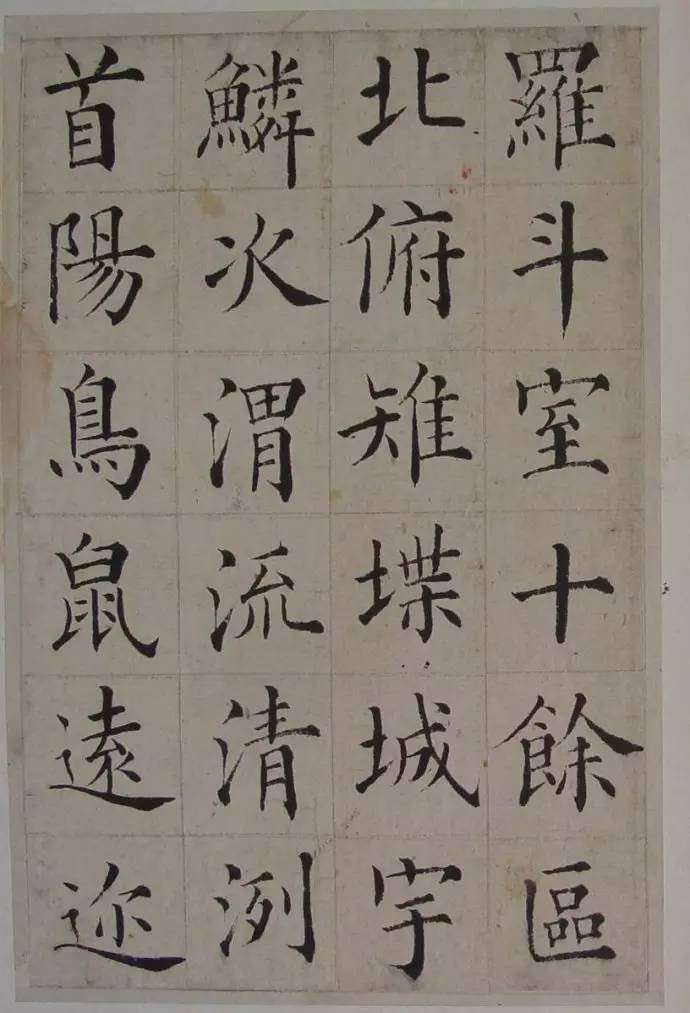
Looking at the whole article, it can be confirmed that it is an excellent article about the history of the academy. In just over 500 words, the academy's organizational history, internal structure, external environment, as well as the need to establish the academy and the prospects after the academy are completed are clearly explained, making the scene at that time vivid on the page. The simplicity of the language and the precision of the words are astonishing. In addition, the poem-like language throughout the book makes it catchy and fluent to read. It not only reproduces Zhang Yuesong's literati style of being a talented and knowledgeable scholar, but also reflects his noble character of being charitable and diligent as an official.
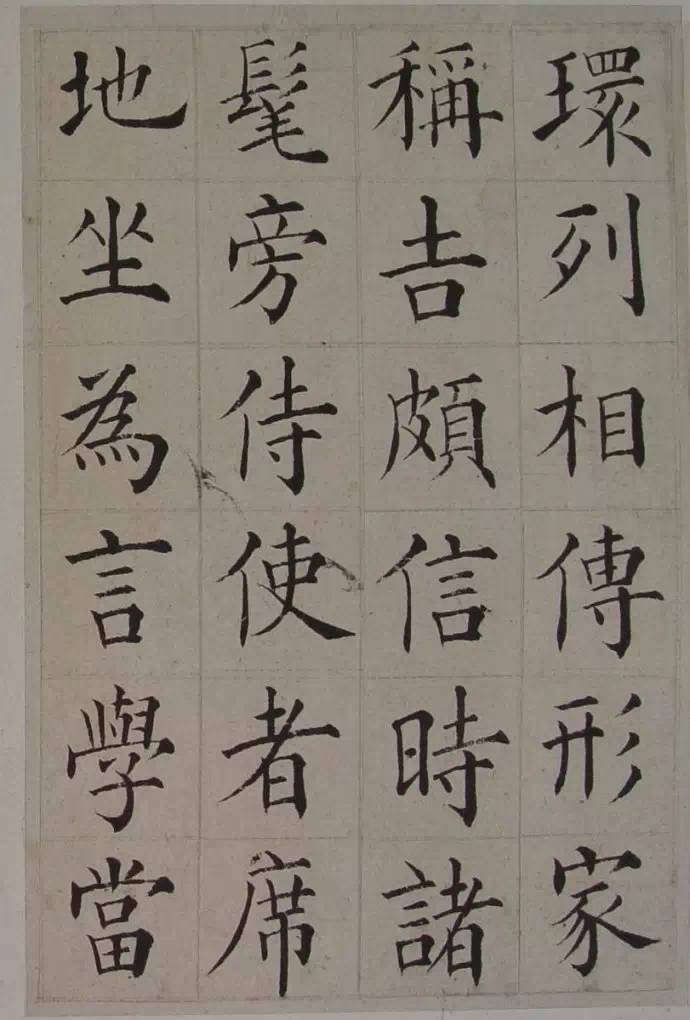
Authenticity test
This collection comes from the private sector, and its authenticity is its value. In addition to the above-mentioned experts from various institutions who have confirmed the authenticity of the material, pen and ink, patina, and style, it is also not difficult to see the historical traces and inheritance trajectory from the content and seal of the "Nan'an Academy Stele". It has three characteristics:
First, it can be seen from the inscription "Given to the Jinshi Dynasty Hanlin Academy Editor and Admiral Zhang Yuesong of Shaanxi-Gansu Academic Affairs Qiongzhou to write and seal the seal script". "Zhuan" means writing an article, and "Shudan" means writing an inscription (the ancients used a red pen to write on the stone and then The inscription on the stele was called "Shudan", which later generally referred to the writing of stele inscriptions), and "Zhuan forehead" means that the name of the stele is inscribed in seal characters. It shows that the inscription, epitaph and title of "Nan'an Academy Stele" were all written by Zhang Yuesong himself, and this album page is the original manuscript used for the original inscription.
Secondly, if there is a manuscript of the stele, there should be a stele. It has been verified by many parties that this stele exists, but its whereabouts are unknown. It is estimated that it has been lost or destroyed. However, the original text of the inscription was found in the "Gongchang Prefecture Chronicles" provided by the Longxi Municipal Museum. After comparison, it was exactly the same as what was written on the album page. It shows that the inscriptions on the inscriptions are consistent and the album pages are original.
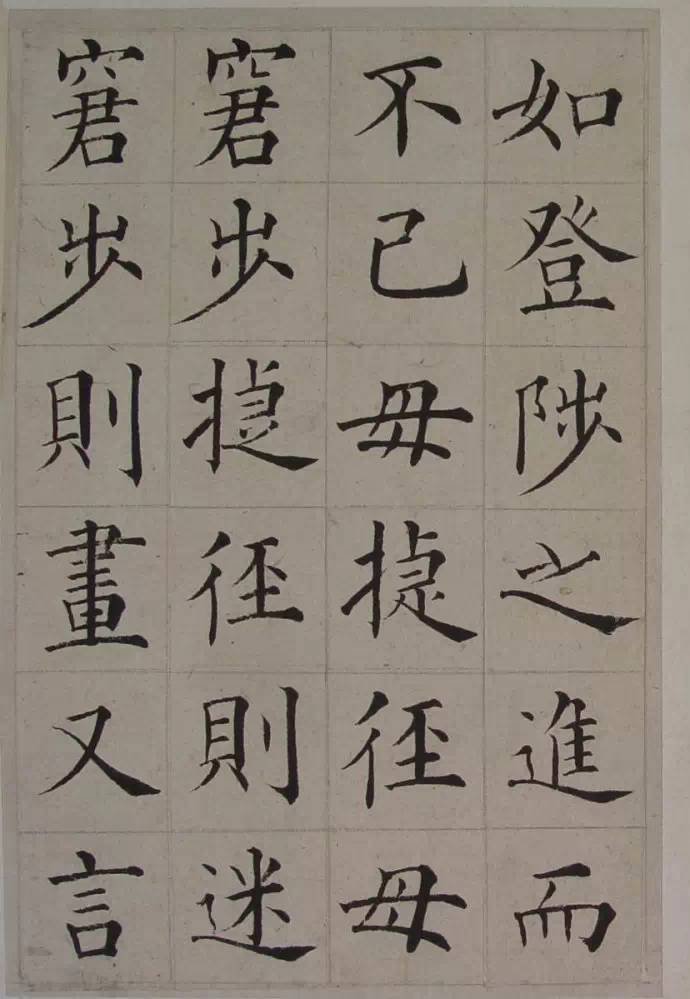
Thirdly, judging from the collection seal on the album, this album has been collected by at least two people. The first collector was the master of the "Yanghui Hall" seal. After investigation, this person's name was Liu Rong, also known as Liu Rong (1816--1873), named Meng Rong, nicknamed Xiaxian, a native of Xiangxiang, Hunan, and a civil servant under Zeng Guofan. In the second year of Tongzhi (1863), he was appointed governor of Shaanxi and supervised all military affairs in Shaanxi. In the fifth year of Tongzhi, he was dismissed and returned to his hometown. After abandoning Jia and returning to the fields, he built "Yanghui Hall" in the house, which means "hide your strength and bide your time". This album was probably acquired by him when he was the governor of Shaanxi Province. He treasured it and sealed it with his official title. The second collector is Tang Zezhao, whose name has not been found. However, judging from the fineness and large number of seals on it, it should be a small and well-known collector in the late Qing Dynasty or the Republic of China. The details have yet to be verified. Therefore, the album pages are complete and circulated in an orderly manner.
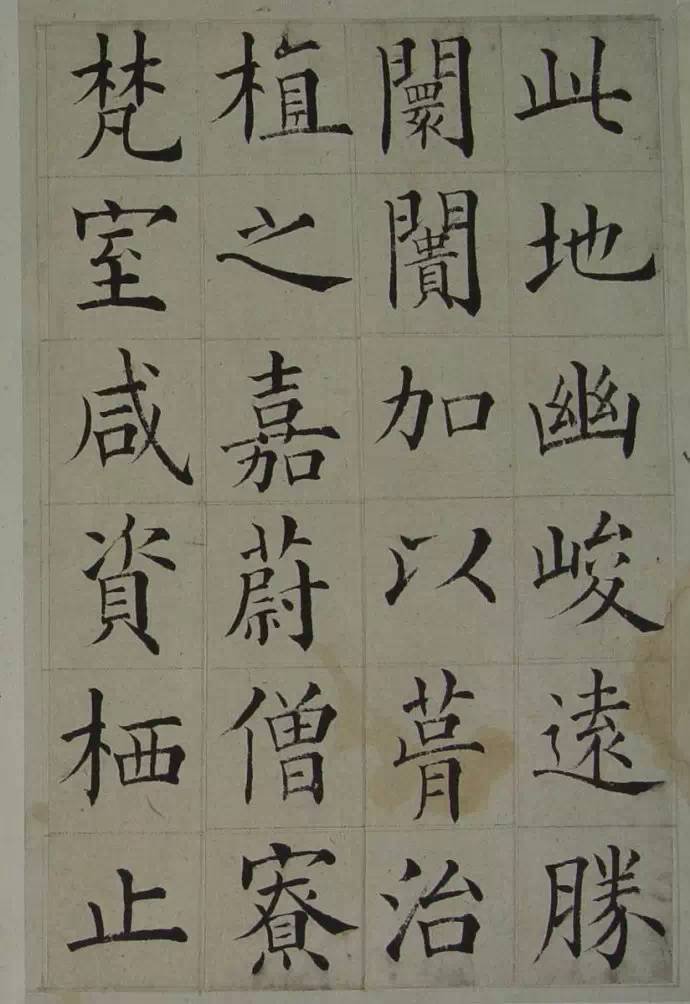
Value assessment
Zhang Yuesong (1773-1842), also known as Zijun, also known as Hanshan (first as Lushan), and named Jue'an, was a native of Gaolin Village, Yongfeng Township, Ding'an County, Hainan Province (formerly Guangdong Province). A famous official, writer, calligrapher and painter in the Qing Dynasty. He was the only Tanhualang in Hainan during the Ming and Qing dynasties. He has successively served as co-editor of the National History Museum, co-examiner of the National Examination, editor of Wenying Hall, editor of Wuying Palace, tutoring Shujishi, chief examiner of Sichuan Rural Examination, Shaanxi-Gansu Academic Affairs, Wenyuan School Administrator, Imperial Academy Lecturer, Jiangsu Changzhen Tonghai Bingdao, Hubei Chief Envoy, Salt Transport Envoy to Zhejiang and Zhejiang, Zhejiang Inspector, Dali Temple Shaoqing, Zhanshifu Zhanshi, Nursing Governor and other positions.
Zhang Yuesong is erudite and has a wide range of interests. He is praised for his articles, calligraphy and painting. He is also a well-known calligrapher and painter in the Qing Dynasty, especially famous for his calligraphy. The modern published "Dictionary of Chinese Calligraphers and Painters", "Chronology of Calligraphers and Painters of the Song, Yuan, Ming and Qing Dynasties", " Books such as "Lingnan Painting Survey" have articles specifically introducing Zhang Yuesong, saying that his "calligraphy is as famous as Guo Lanshi (Shang Xian). He was a painter of the Yuan Dynasty. He did not make many paintings. He has only a few pieces of ink left, and he has many treasures." " "Guochao Painting Survey" listed Zhang Yuesong as one of the four major calligraphers in Guangdong, and "Hanshan Gong's Record of Worshiping the Rural Sages" said that "calligraphy has the secrets of various schools in the Jin and Tang Dynasties, and each imitation is exquisite, with only one word in a piece, and a person's calligraphy Fight for the treasure." The "Dictionary of Chinese Calligraphers and Painters" said that he was "the calligrapher Ou (Yang Xun) Liu (Gong Quan), especially good at breaking large characters. At that time, many tablets were produced by his hand." There are many handwriting relics of Zhang Yuesong. To be passed down to future generations, the Ding'an County Museum still preserves Zhang Yuesong's handwritten banners, couplets, manuscripts, plaques and various seals. There are also many people in Hainan who have collected his calligraphy works, but only the manuscripts of the inscriptions have been seen.
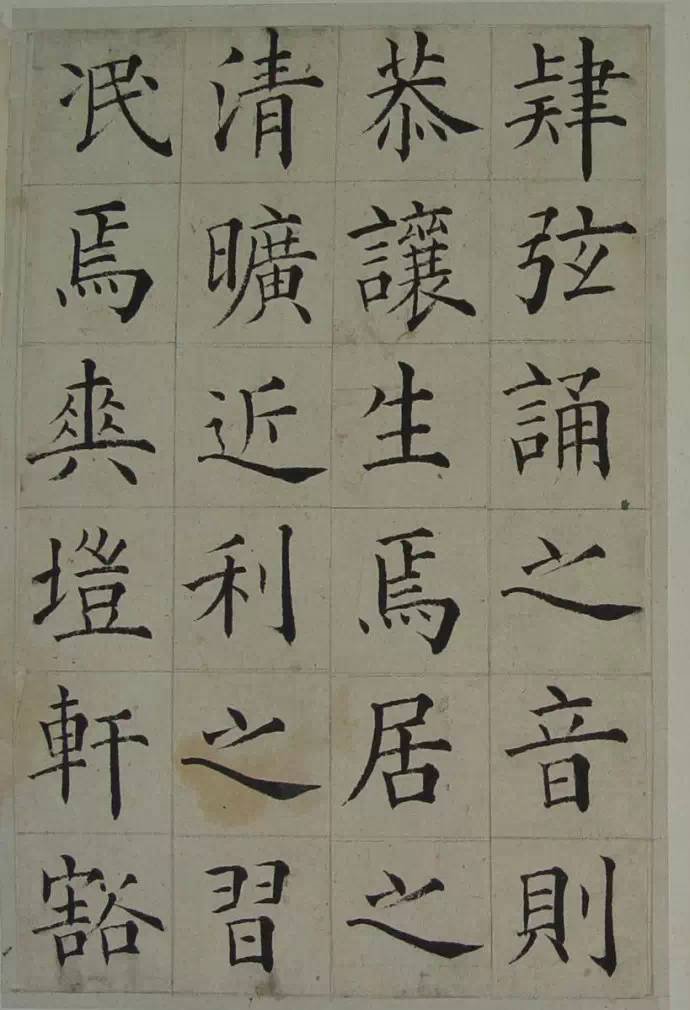
Zhang Yuesong is a rare talent in the history of Hainan. In addition to being proficient in articles, calligraphy and painting, he is also proficient in law, economics, water conservancy, military, and medicine. He is truly an all-rounder. During his lifetime, he wrote "Collected Works of Jun Xintang", "Collected Poems of Jun Xintang", "Journey to the North of the Canal", "Records of Disciples", "Occasionally Existed Official Documents", etc., which are still preserved in the Guangdong Sun Yat-sen Library. Daoguang's "Qiongzhou Prefecture Chronicles" that we are most familiar with was compiled by him. Zhang Yuesong also lectured at Qiongzhou Qiongtai Academy, Yanfeng Academy, Yangcheng Yuexiu Academy, and Zhaoqing Duanxi Academy. He made great contributions to Hainan's cultural and educational undertakings throughout his life. He was hailed as one of the four great talents in Hainan (Qiu Jun, Hai Rui, Wang Zuo, Zhang Yuesong) by the people of Hainan in the past dynasties. He was one of the "Four Talents" in Hainan who was famous for his tireless study and proficiency in calligraphy and painting.
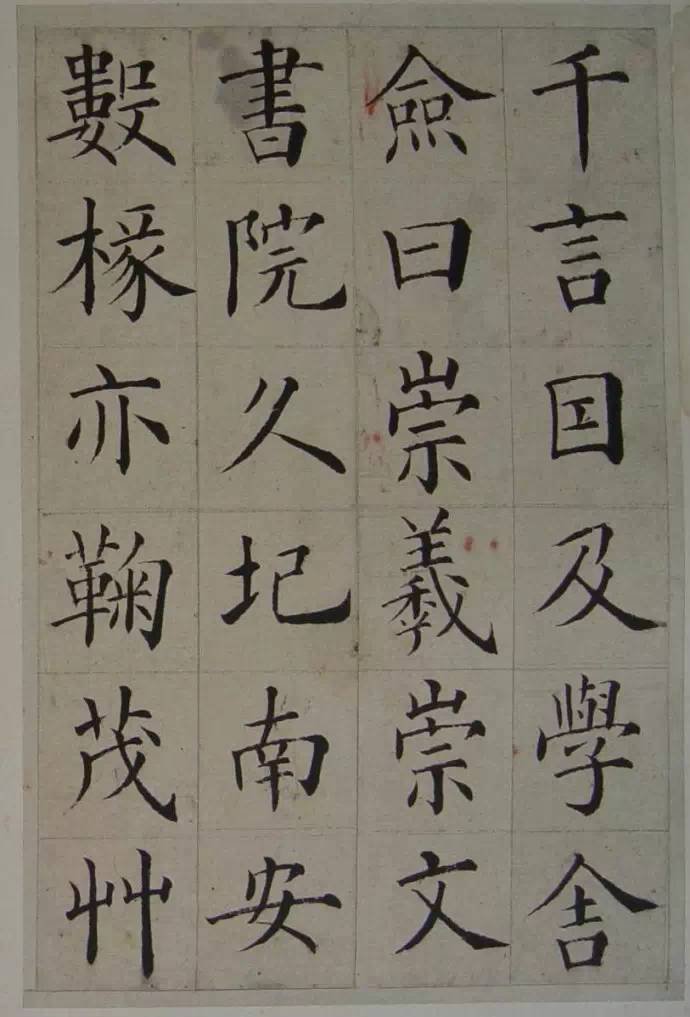
The full text of "Nan'an Academy Stele"
Gong, win over the homeland of Qin. Zulong set up the county of Longyou, and moved to Nan'an during the Han Dynasty. The history of the separatist rule has been endless for generations.
The country has been governed from afar and controlled by long-term governors. For more than a hundred years, there was only a faint sound of drums and drums, and gangsters used to compile documents. In the fourth year of Daoguang reign, the envoy held Jie to inspect the school. As soon as we got off the bus, we gathered the words of the fashionable people: With the courtesy and courtesy, the distinction between justice and benefit is wise and trivial. Tu Zhe walked back and forth, and Zhu Mao climbed up and down the stairs one by one. There was a building with wings and a house with three couplets, which was called Wenchang Pavilion. There are more than ten districts in Luo Doushi, overlooking the battlements in the north, with rows of cities and buildings, clear Weiliu River, Shouyang Wushu, and all around. According to legend, the Xing family is called auspicious, which is quite trustworthy. At that time, the attendants sat on the ground and said: "Learning should be like climbing a mountain and advancing continuously. There should be no shortcuts and no awkward steps. Shortcuts will lead to confusion, but awkward steps will lead to painting." He also said: This place is secluded and steep, far better than the shopping malls. It has been renovated and planted, and the monks and Buddhist monks live there. When you recite the sound of the string, you will be respectful and respectful, living in a clear and spacious place, and the habit of quick benefits will disappear. Shuanggaixuan is open, and thousands of words are related to the school building. Qian said: Chongyi Chongwen Academy has been destroyed for a long time, and Nan'an has several rafters and tall grass. What's the matter? The messenger said: Schools are the foundation of talents and the foundation of customs. The foundation is not the plan, but the foundation and dimension are established. How can all the fashions and ridicules return? I advocated the urgent need for innovation, and everyone agreed with horror. There will be a long drought, so the messenger fasts for ten days and prays again and again, and all the rain brings benefits. If the envoy ignores him and shares his concerns, he will be overjoyed and talk to each other, making four thousand beers a day. The envoys donated money and led the orders to help them, and they have been successfully used so far. After that, we tried to remove the thorns and urgently visited the old site of Nan'an. About half a mile south of the city, there is Renshou Mountain. Along its foot, there is a trickling spring, and you can wash your house and relax. Looking up at the top, you can see the halls are dimly visible, and the cliffs are like paintings. If there is a sign on the door, the old forehead will be darkened. The envoy leaves his disciples behind and observes the suitability with pleasure, and the wisdom emerges. The wind and rain are bright and dark, and he enjoys the morning and evening together. If you are a teacher like a disciple, if you observe and practice the teachings, there will be those who are suddenly enlightened, stand out, and are in perfect harmony with the Tao. Studying the characters and searching for them, the sounds and rhythms are enough to sing. Gai had great academic knowledge, great honors and great reputation, and he had accumulated a lot of achievements, so he took all kinds of trendy things, and all of them were happy and retired. Since it is new, its rules and regulations are clear, and it is based on discipline and thought, so that I can know it. It is of great benefit to cultivate talents, establish the outline, and revitalize the country.
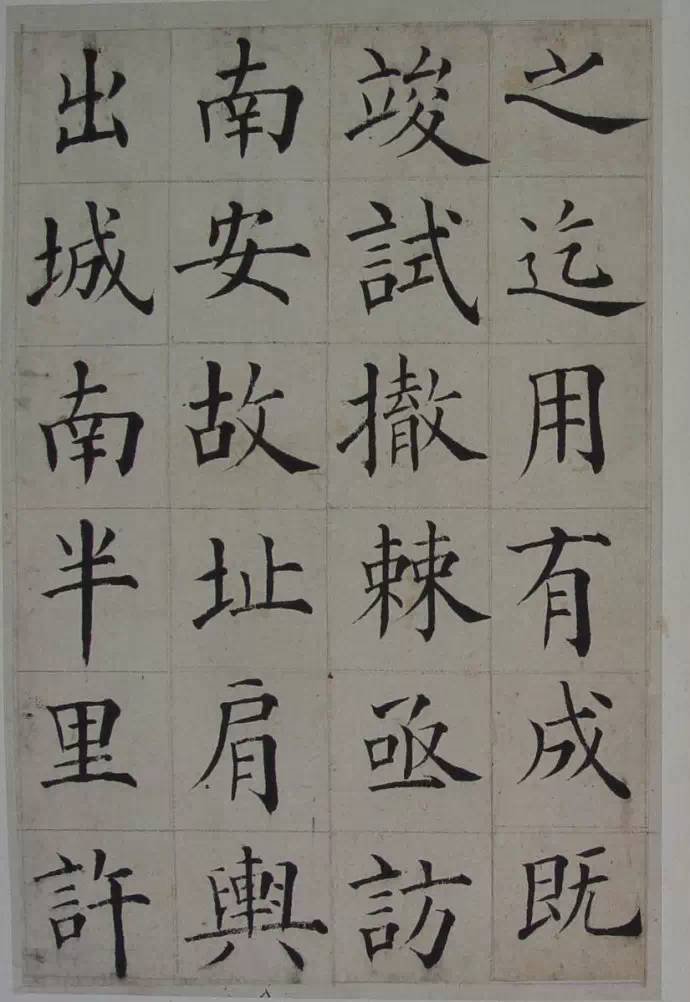
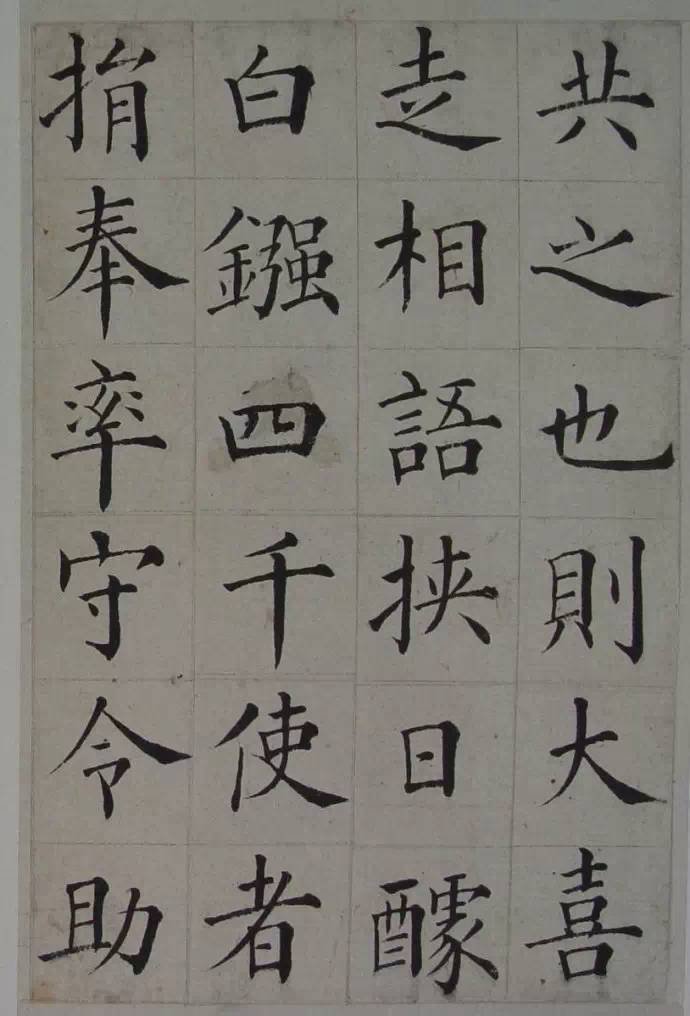
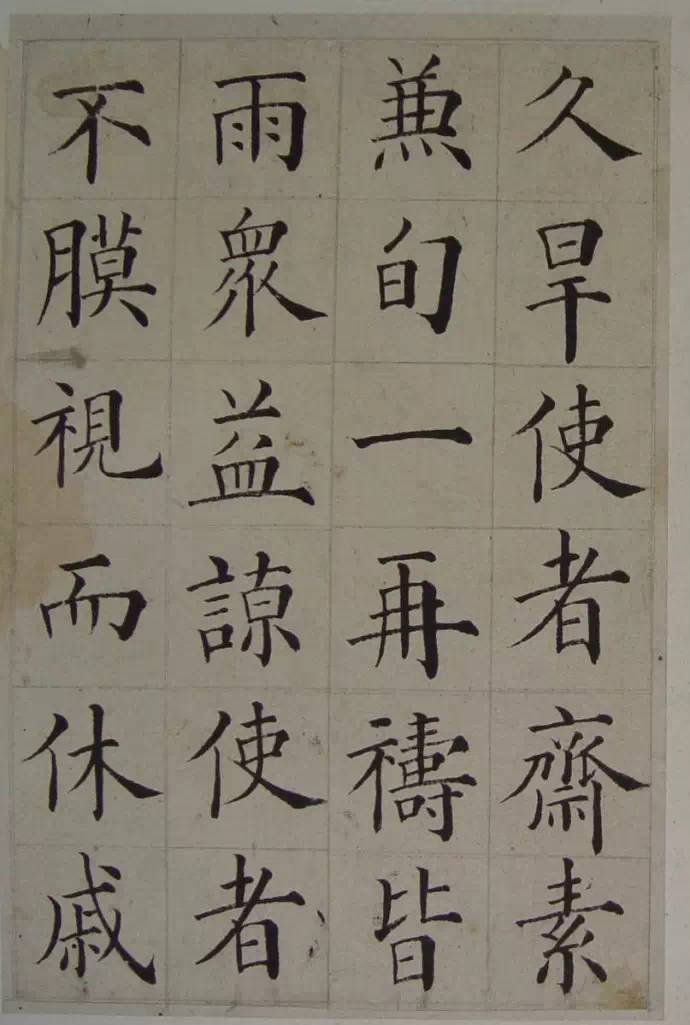
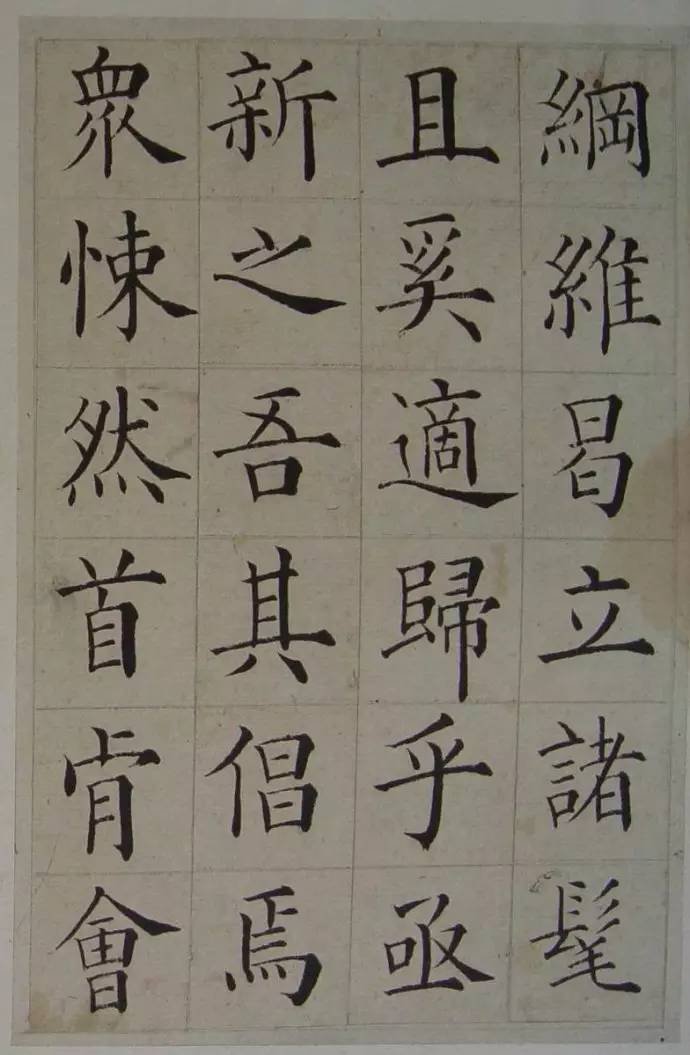
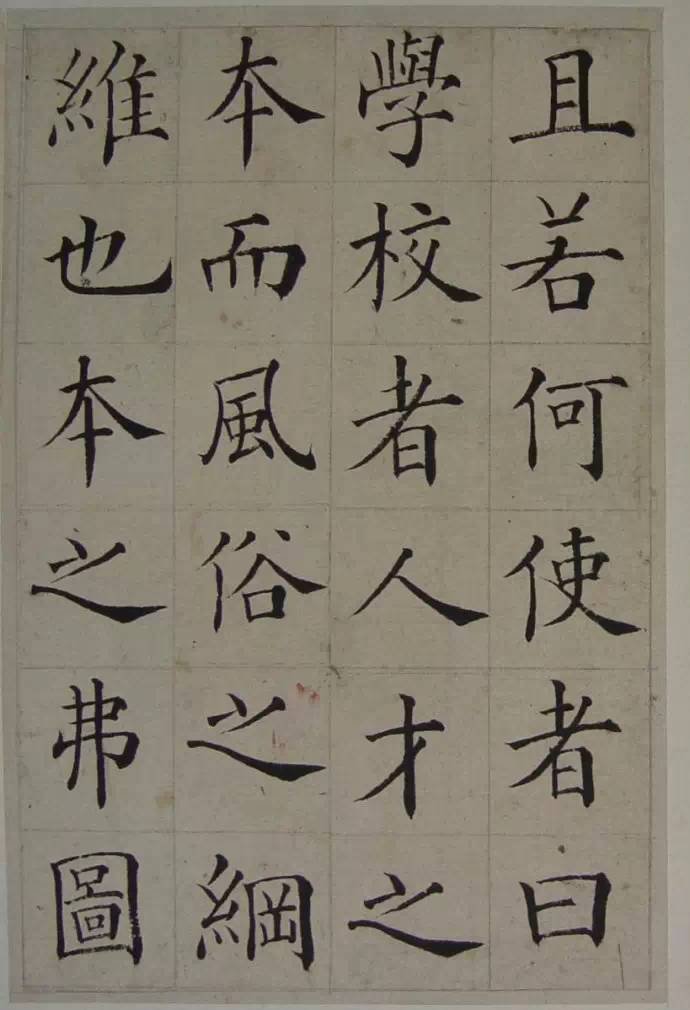
——Given the rank of Jinshi, editor of the Hanlin Academy, admiral of Shaanxi-Gansu academic affairs, Zhang Yuesong of Qiongzhou wrote and wrote the seal script. He was the only Tanhua in Hainan during the Ming and Qing Dynasties. He was an official of the third rank and had profound calligraphy. He was as famous as Guo Shangxian and was listed as one of the four major calligraphers in Guangdong. "Nan'an Academy Stele Inscription" is the only authentic regular script inscription of Zhang Yuesong discovered in recent years. It is the inscription manuscript he wrote for the establishment of Nan'an Academy. It is very important for studying the distribution of education in the middle and late Qing Dynasty and the cultural construction of Longxi region. The research on Zhang Yuesong's life has very important cultural and historical research value. The calligraphy of the album is in European regular script, with obvious characteristics of calligraphy. The article is like poetry, the words are heartfelt, the pen is extremely precise, and the skill is extraordinary. It is a masterpiece of Zhang Yuesong's calligraphy and has high artistic research value. In addition, it is the original draft of the stele. If the original stele has been lost, it is said to be an orphan. It is not an exaggeration to say that it is rare and therefore has high collection value. It can be said that this is a fine work that combines the value of art, collection and cultural and historical research. If it is valued according to the "three properties" of the artwork, namely historical, artistic and rarity, its price will definitely be high. Such a cultural relic It would be a pity if such fine art works cannot be collected by the country.
